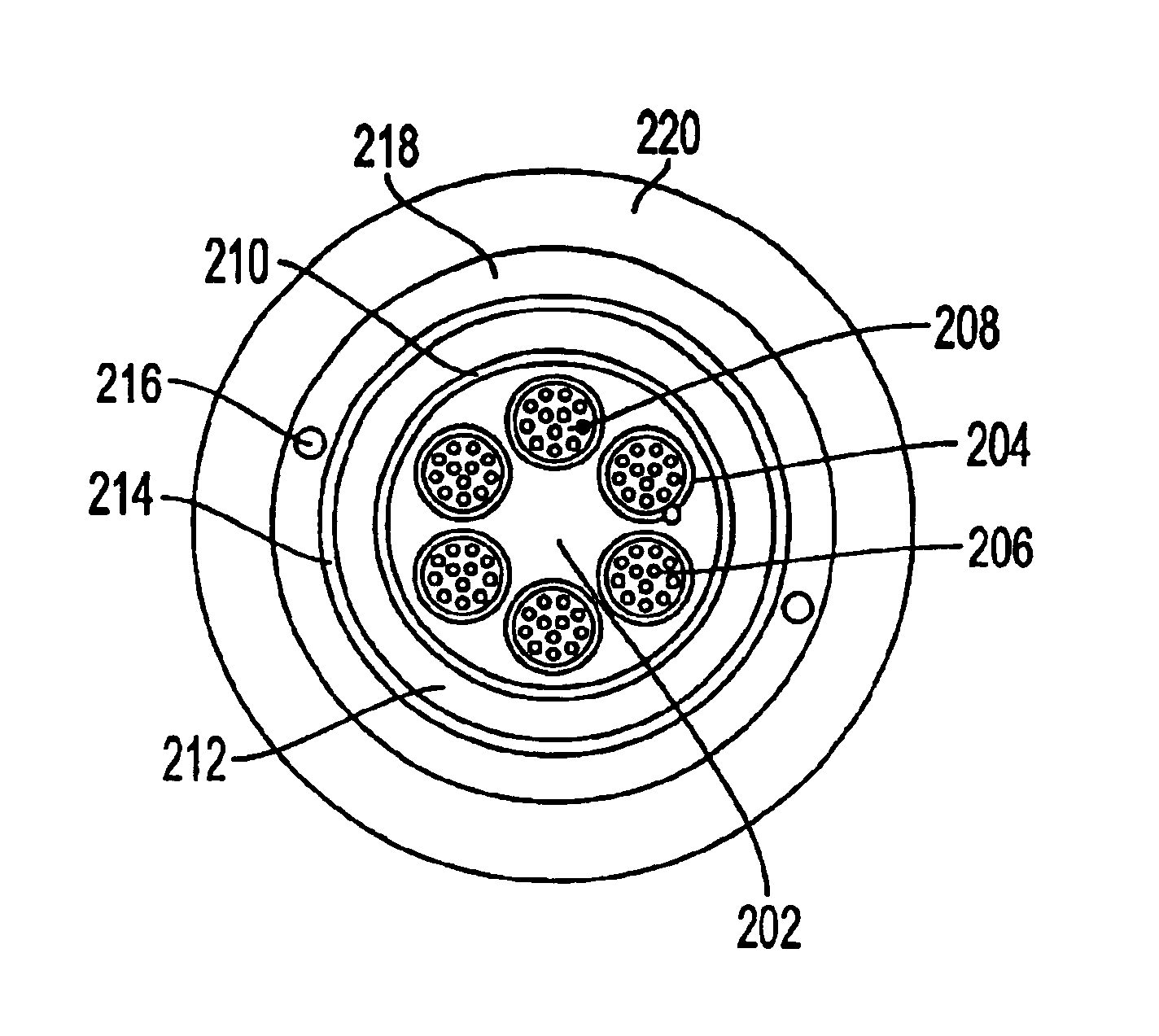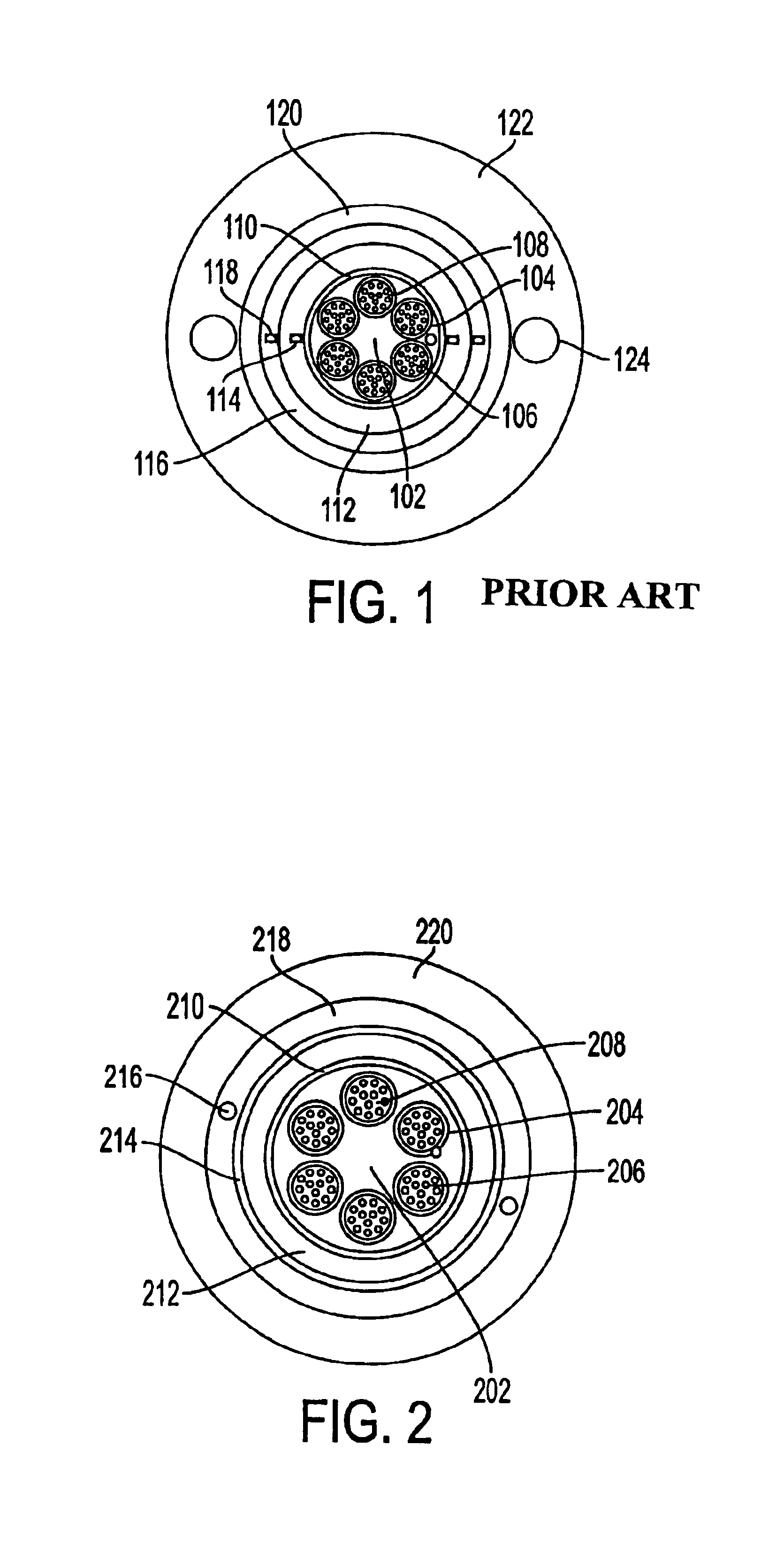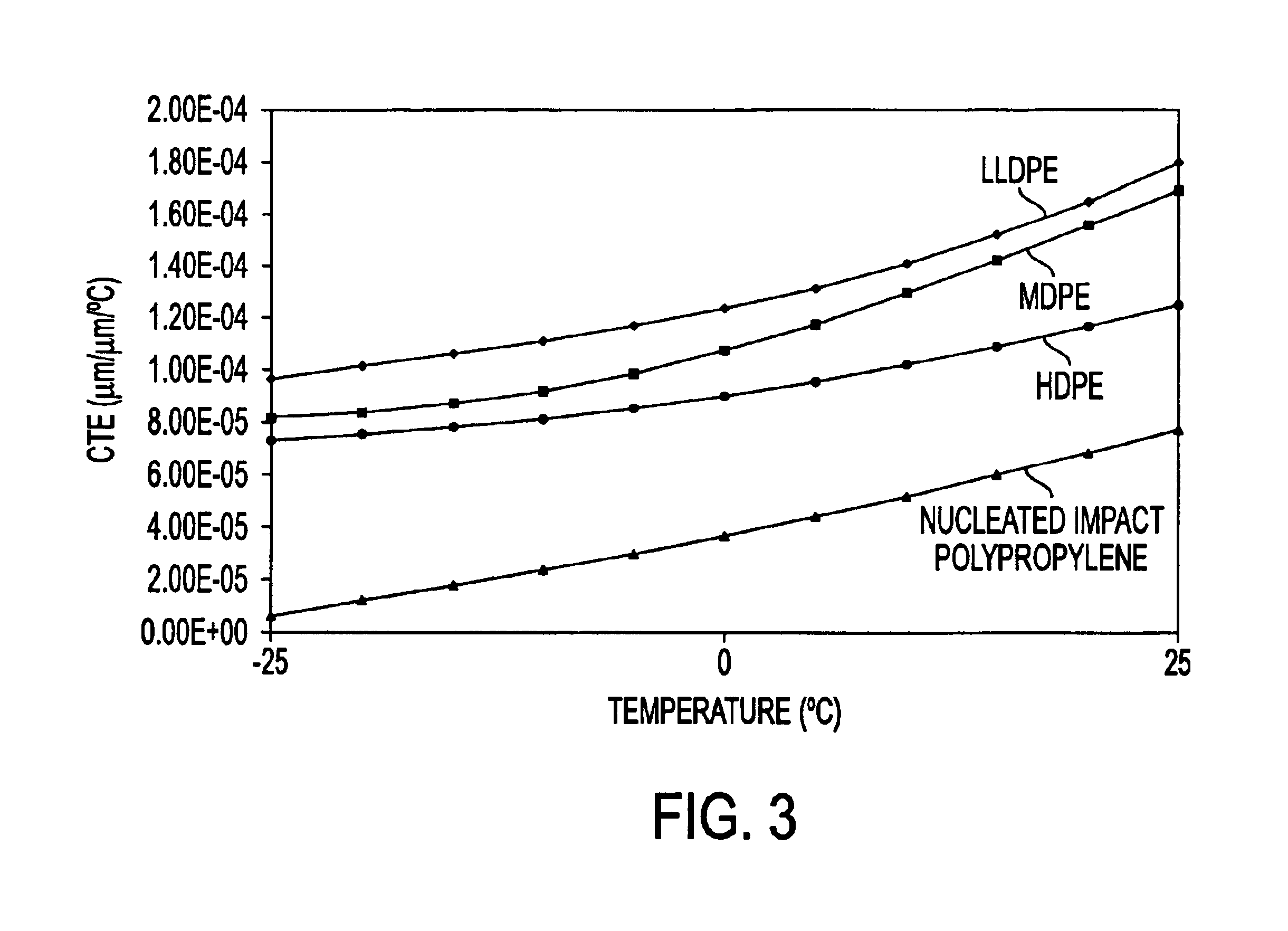Fiber optic cable having no rigid strength members and a reduced coefficient of thermal expansion
a fiber optic cable and rigid strength technology, applied in the field of fiber optic cables, can solve the problems of significantly limited bending performance of fiber optic cables and negatively affect the installation ease of conventional fiber optic cables, and achieve the effects of reducing the coefficient of thermal expansion, rigid strength members, and reducing size and weigh
- Summary
- Abstract
- Description
- Claims
- Application Information
AI Technical Summary
Benefits of technology
Problems solved by technology
Method used
Image
Examples
Embodiment Construction
[0014]The following description of illustrative non-limiting embodiments of the invention discloses specific configurations, features, and operations. However, the embodiments are merely examples of the present invention, and thus, the specific features described below are merely used to more easily describe such embodiments and to provide an overall understanding of the present invention.
[0015]Accordingly, one skilled in the art will readily recognize that the present invention is not limited to the specific embodiments described below. Furthermore, the description of various configurations, features, and operations of the present invention that are known to one skilled in the art are omitted for the sake of clarity and brevity. Also, it is to be understood that the phraseology and terminology employed herein is for the purpose of description and should not be regarded as limiting.
[0016]FIG. 1 shows a cross-sectional view of a conventional fiber optic cable. The cable is provided w...
PUM
 Login to View More
Login to View More Abstract
Description
Claims
Application Information
 Login to View More
Login to View More - R&D
- Intellectual Property
- Life Sciences
- Materials
- Tech Scout
- Unparalleled Data Quality
- Higher Quality Content
- 60% Fewer Hallucinations
Browse by: Latest US Patents, China's latest patents, Technical Efficacy Thesaurus, Application Domain, Technology Topic, Popular Technical Reports.
© 2025 PatSnap. All rights reserved.Legal|Privacy policy|Modern Slavery Act Transparency Statement|Sitemap|About US| Contact US: help@patsnap.com



